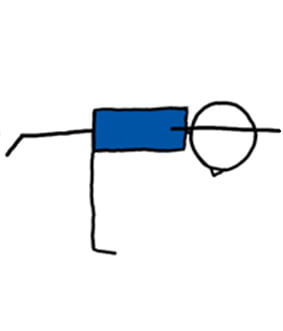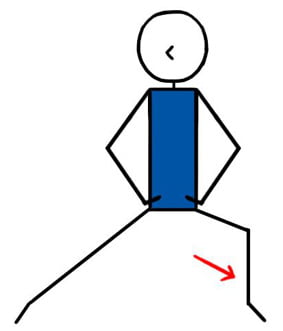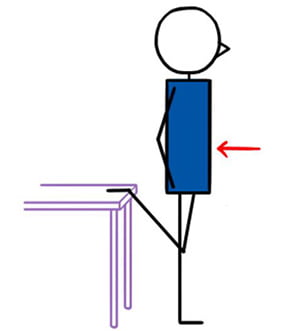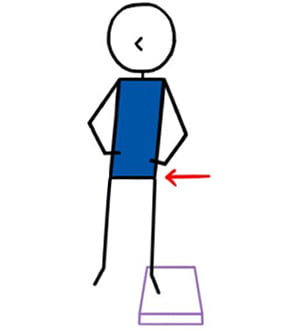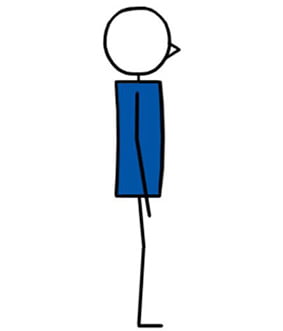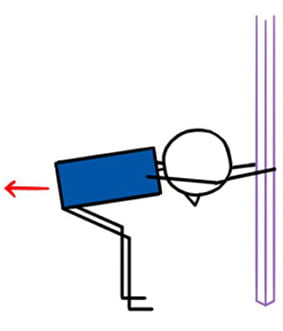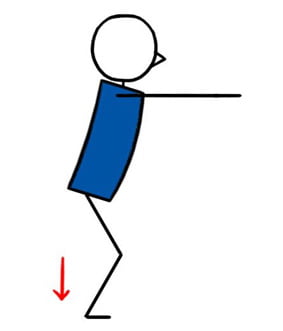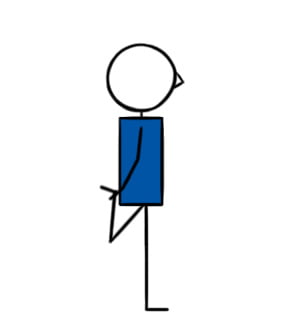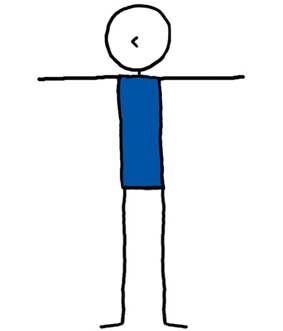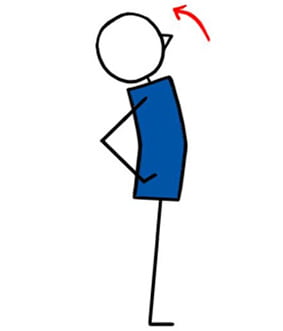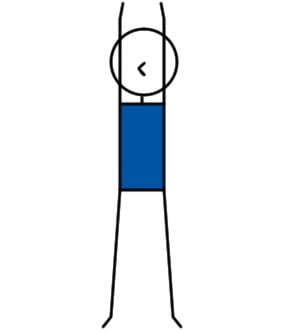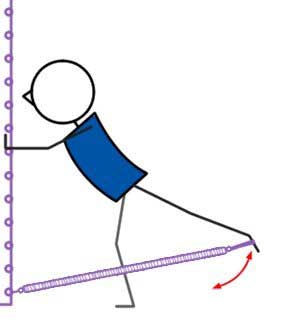
| Category: | Pilates Lesson Planner |
|---|---|
| Sub Category: | Springboard |
| Types: | Balance, Chest Opener, Hip Opener, Standing, Stretch |
| Anatomy: | Arms & Shoulders, Biceps & Triceps, Core, Hamstrings, Hips, Neck, Psoas, Wrists & Arms |
| Chakras: | Base, Heart Centre, Sacral Centre, Throat Centre |
| Therapy: | Back Pain, Confidence Building, Poor Posture |
| Drishti: | Tip Of Nose |
| Dosha: | Kapha, Pitta |
Put left leg into the strap. Step back with feet together. Lean forward from the hips and press both hands into the board. Tap back the toe of the leg that is in the spring. Lift and lower slowly. Repeat. Swap sides.
Quad, hip, thigh, ankle, & leg stretch.
A) Pulses. B) Use a strap instead of the Springboard.
Click here for lots of FREE downloadable Yoga lesson plans.
Click here for lots of FREE downloadable Pilates lesson plans.
Pilates Springboard FAQs
What is Springboard in Pilates?
Springboard class is a mat-based Pilates workout that uses springs and levers attached to the wall-mounted springboard. This Pilates class fuses classical pilates mat with Pilates equipment training.
Who invented the Pilates Springboard?
Master Trainer Ellie Herman is an innovator in the field of Contemporary Pilates and the inventor of the Pilates Springboard. Ellie lives in Park Slope and owns several studios in Brooklyn, New York.
Is the Pilates Springboard affordable?
In comparison to other Pilates equipment, it is affordable. Designed by master teacher Ellie Herman the Pilates Springboard is an affordable, space-saving piece of Pilates equipment that provides a full-body workout. The Springboard bolts to the wall, so it doesn’t take up floor space. This makes it perfect for an extra room, a home gym, garage, attic, or basement.
What’s the main difference between Pilates Springboard and Reformer?
Springboards are becoming very popular. They’re more affordable and they take up less space than bigger pieces of equipment. Even though both the Reformer and Springboard use spring resistance, the feeling—and the effects—can be very different. One of the main differences is that the springs on a reformer are attached to the carriage. So even if you use both limbs they still pull the one carriage on the reformer. However, with a Springboard, each limb works with its own spring. That means each limb works independently. This adds a significant coordination challenge—for the brain and for the body. It also makes the Springboard a great tool for working on imbalances. Preference for the Reformer or Springboard is a personal matter. Many like both. People love the feel, the challenge and the fun of working with resistance in a new way on the Springboard.
Do you have to work harder to stabilize and balance on the Pilates Springboard?
Yes. On the Springboard, there is no foot bar to press against like on the Reformer, so clients often find they have to work harder to stabilize and balance. You will feel the effects quickly.
Does the Springboard offer less support than the Reformer?
Yes. The Reformer carriage offers support for the body. With the Springboard, there is no extra support for the body. There’s just you and the springs. Working on the Springboard requires more integrated control and body strength – people love the feel factor that the Springboard offers.




 Yoga Lesson Planner
Yoga Lesson Planner
 Pilates Lesson Planner
Pilates Lesson Planner



